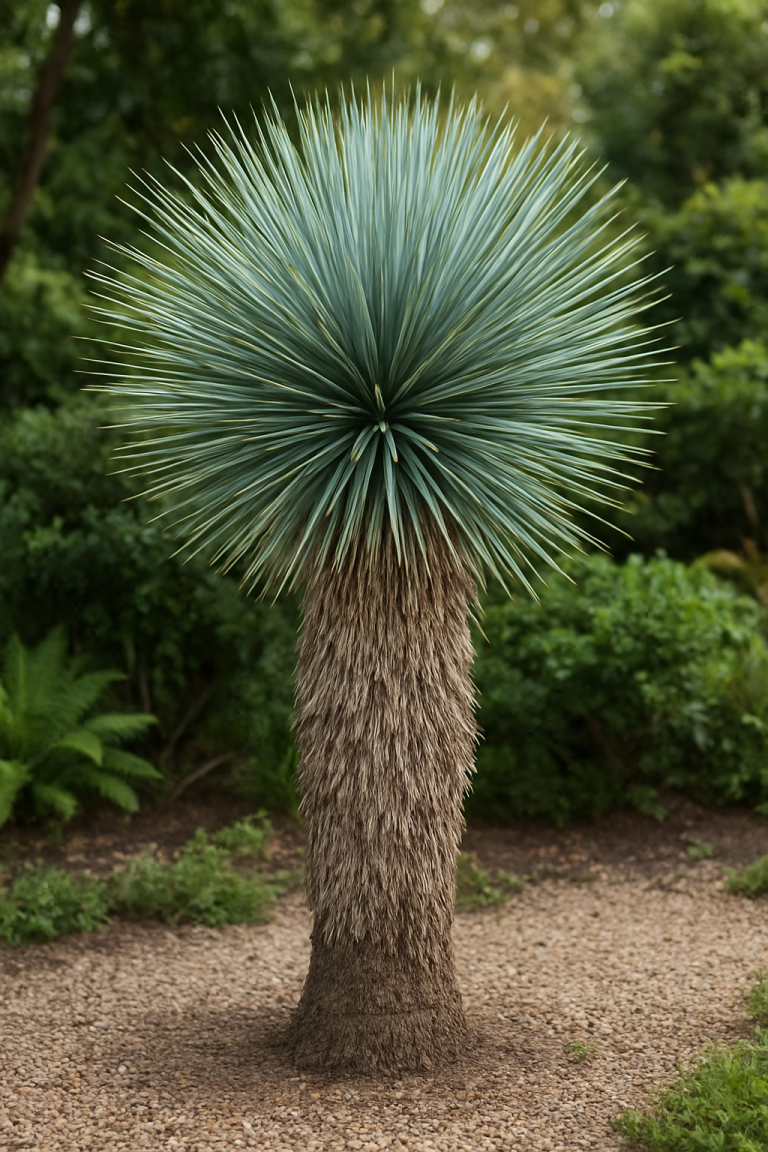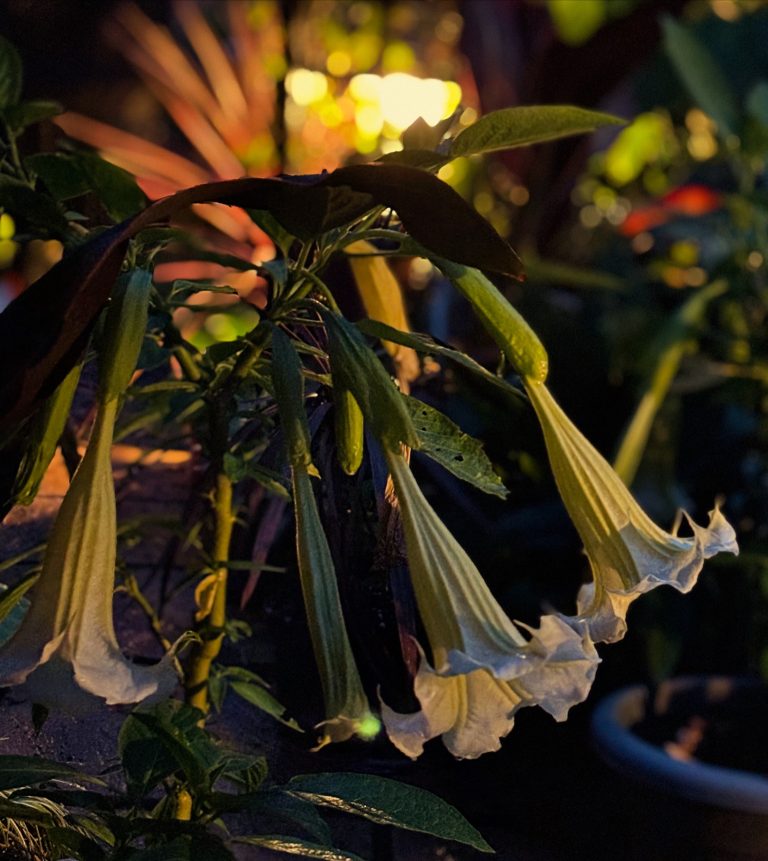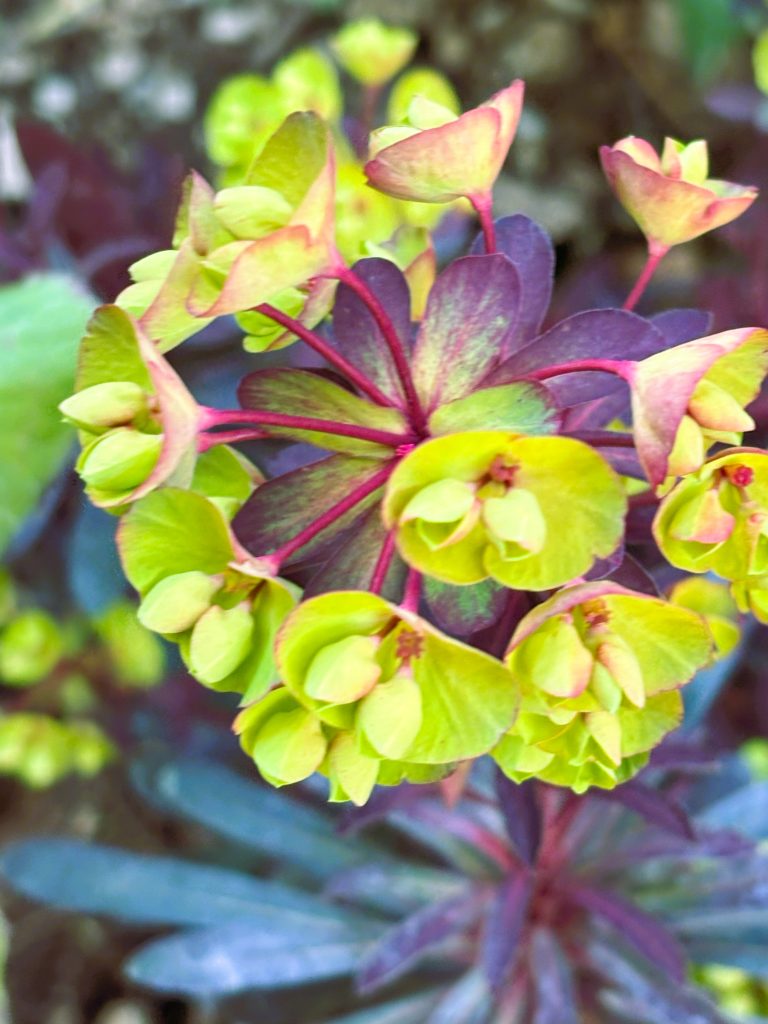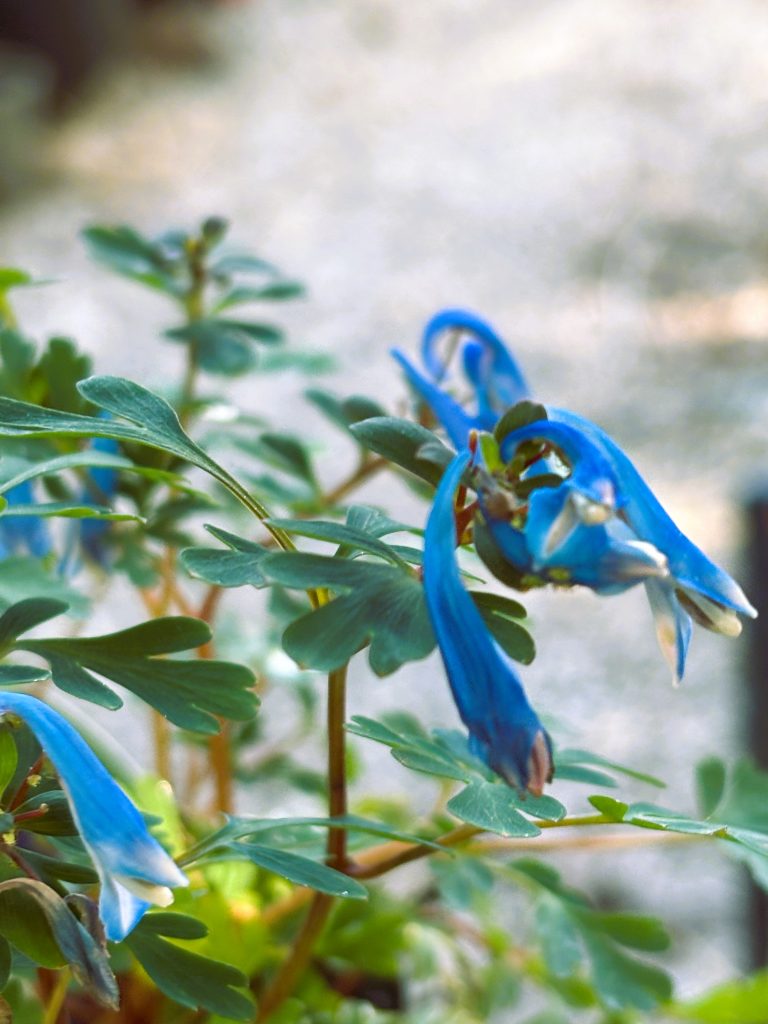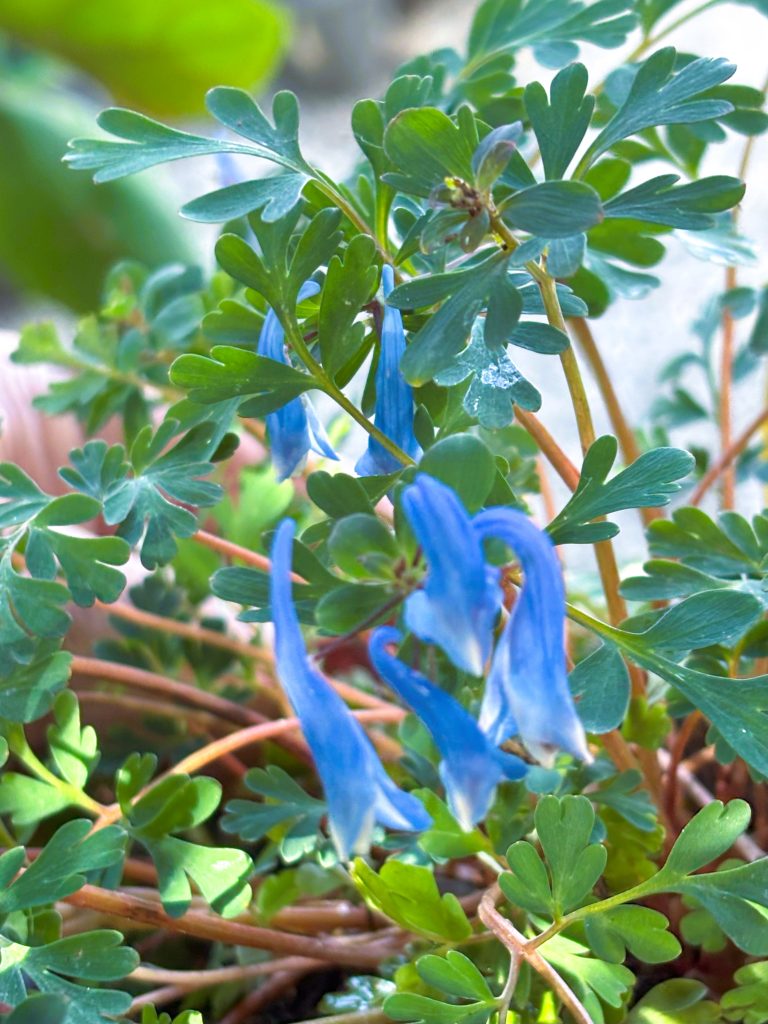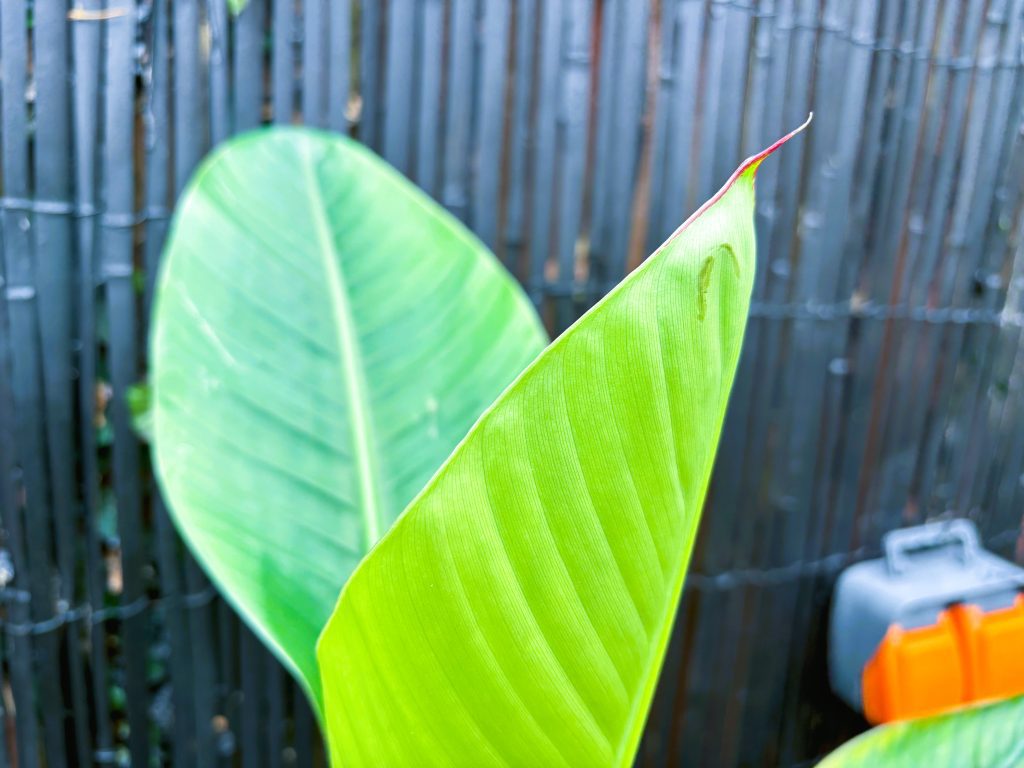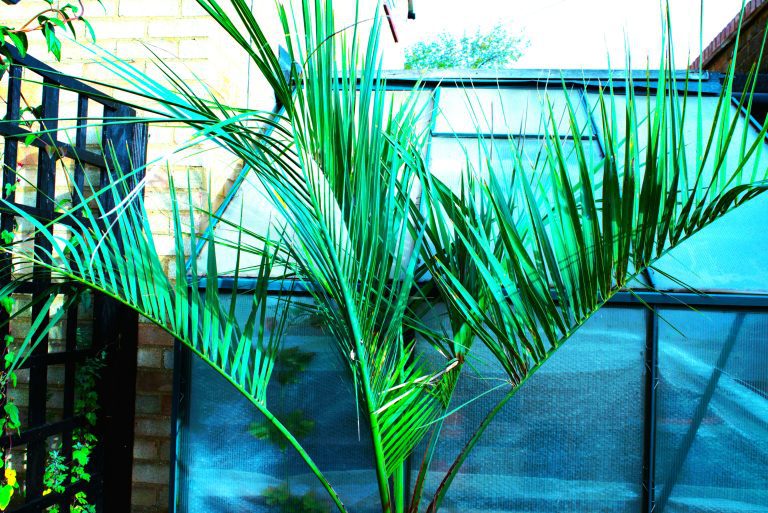🌵 Yucca rostrata (Beaked Yucca)
Plant Overview
🌿 Botanical Classification
- Kingdom: Plantae
- Clade: Angiosperms
- Clade: Monocots
- Order: Asparagales
- Family: Asparagaceae
- Subfamily: Agavoideae
- Genus: Yucca
- Species: Yucca rostrata Engelm. ex Trel.
- Botanical name: Yucca rostrata Engelm. ex Trel.
- Common name: Beaked Yucca
- Origin: Chihuahuan Desert, northern Mexico and western Texas
- Type: Evergreen tree-like perennial
- Height & spread: 3–4 m tall, 1–1.5 m spread
- Growth rate: Slow
- Lifespan: Long-lived under good conditions
Form: Single or multi-trunked with a dense head of narrow, blue-grey leaves forming a spherical crown.
Leaves: Rigid, sword-shaped, up to 60 cm long, with a fine tip and smooth edges (unlike many other Yuccas).
Flowers: Tall panicles of white, bell-shaped blooms appearing in late spring to early summer
Description
Yucca rostrata is an elegant and hardy architectural yucca, forming a tall, slender trunk crowned with a dense globe of fine, steel-blue leaves. Each leaf is narrow and flexible with a soft tip, giving a refined look for tropical or desert-style gardens. Mature plants produce a tall flower spike with creamy-white, bell-shaped blooms in late spring or summer. Its silvery crown and trunk make it an excellent focal plant.
Growing Conditions
- Position: Full sun, south-facing and sheltered from cold winds
- Soil: Sharply drained, sandy or gritty soil; avoid heavy clay
- pH: Neutral to alkaline
- Watering: Water sparingly in summer; keep almost dry in winter
- Feeding: Light balanced fertiliser in spring; avoid rich composts
Hardiness
- Cold tolerance: Down to –15°C if kept dry
- UK suitability: Hardy in southern and coastal areas
- Winter care: Protect the crown from prolonged rain using gravel mulch or a simple shelter
Care & Maintenance
- Remove dry lower leaves as they form; leave the “skirt” for a natural look or trim for neatness
- Mulch with gravel or coarse grit for drainage
- Excellent in pots; use a cactus/succulent mix with added grit and shelter in wet winters
- Rarely affected by pests, but check for mealybugs or scale
Potting Mix for Containers
If you’re growing your Yucca in a pot, here’s a simple DIY mix:
- 2 parts gritty compost or multipurpose compost
- 1 part coarse sand
- 1 part horticultural grit or perlite
This mix drains quickly and keeps the roots happy. Make sure your container has a good drainage hole, and top with a layer of gravel or grit to reduce moisture around the crown.
Propagation
- Seed: Sow at 20–25°C in light; germination may take several weeks
- Offsets: Detach and root basal pups if produced
- Division: Not applicable; usually single-trunked
Common Problems
- Crown rot: Trapped moisture; improve drainage and protect from rain
- Leaf browning: Frost or overwatering; remove damaged leaves and reduce watering
- Root rot: Poor drainage; replant in gritty mix or raised bed
Design & Companions
- Ideal for tropical, Mediterranean, and arid-themed gardens
- Works as a feature in gravel gardens, dry borders, or modern courtyards
- Companions: Dasylirion wheeleri, Agave americana, Nolina nelsonii, Trachycarpus fortunei, Cordyline australis, hardy Aloe species
Latin Botanical Description
Yucca rostrata Engelm. ex Trel. — Arbuscula caudice lignoso solitario vel raro ramoso; foliis anguste linearibus glaucis, margine integris; inflorescentia terminali paniculata; floribus albis campanulatis; fructu oblongo rostro producto
🌵 Interesting Facts About Yucca rostrata
- Desert Survivor:
Native to the Chihuahuan Desert of northern Mexico and western Texas, it’s adapted to survive extreme droughts and intense sun. Its leaves store water and reflect sunlight with their bluish-silver color. - Architectural Shape:
Its slow-growing, single-trunked form with a dense crown makes it a natural “living sculpture” — often used as a focal point in both desert and tropical-style gardens. - Long Lifespan:
These plants can live for several decades, sometimes 50+ years in the wild. They’re truly a long-term garden investment. - Flower Spike Drama:
Mature plants produce tall, creamy-white flower spikes, often up to 1 m or more, which are not only striking but also attract pollinators like moths. - Not Just Decorative:
In its native habitat, yuccas are sometimes used for fiber — early peoples used the leaves for weaving ropes and mats. - Slow but Steady:
It’s slow-growing — often only a few centimeters a year in the UK — which means patience is key, but also makes it very low-maintenance once established. - Hardiness Surprise:
Even though it looks tropical or desert-like, it’s surprisingly cold-hardy, tolerating frosts down to –15°C if kept dry. That’s why it works in parts of the UK. - Natural Sculptural Form:
Gardeners sometimes leave the old dried leaves (“skirt”) around the trunk to give it a dramatic desert look, while others trim for a cleaner modern aesthetic. - Container-Friendly:
While it’s a “tree” in shape, it adapts very well to pots, which is perfect for patios or tropical-themed garden corners in temperate climates.
Yucca rostrata is very slow-growing, especially in climates like the UK. Here’s a detailed breakdown:
Growth Rate
- Seedling stage:
- In the first few years, it may only grow 2–5 cm per year.
- Seedlings take several years to form a noticeable trunk.
- Juvenile to mature plant:
- Once the trunk begins to form, growth picks up slightly, but you’re still looking at 5–10 cm of trunk growth per year in temperate gardens.
- Leaves expand gradually; the crown becomes dense over many years.
- Mature height:
- In the wild or very favourable conditions, it can reach 3–4 m tall, but in the UK it often takes 20–30 years to approach 2–3 m, and sometimes longer depending on soil and sun.
Tips for Encouraging Growth
- Full sun: Maximum light boosts leaf production and overall growth.
- Sharp drainage: Avoid wet winters; soggy soil slows growth and can cause rot.
- Lean soil: Too rich soil encourages leafy growth but weakens the trunk.
- Patience: Growth is slow but steady — it’s a long-term architectural plant.
